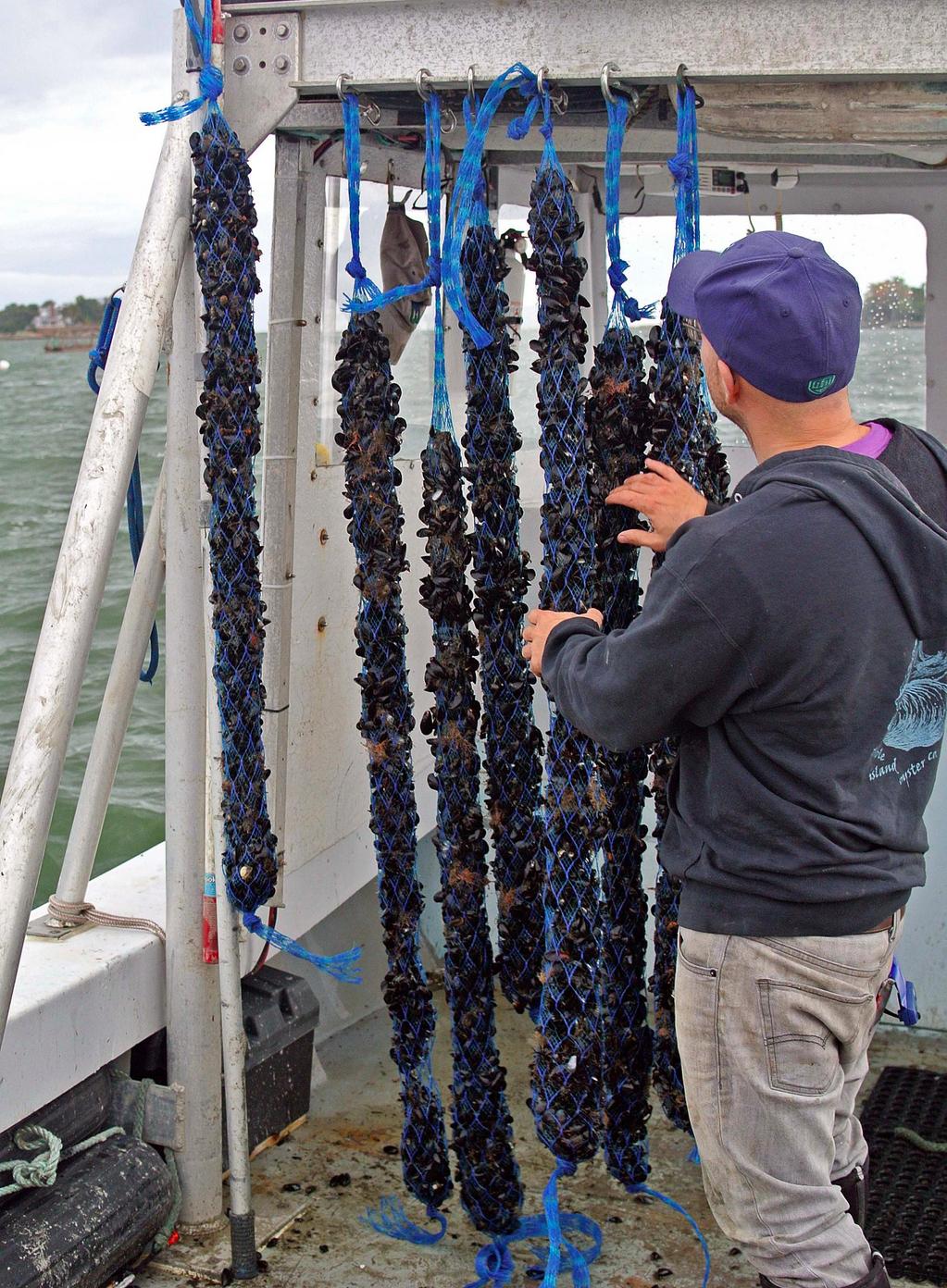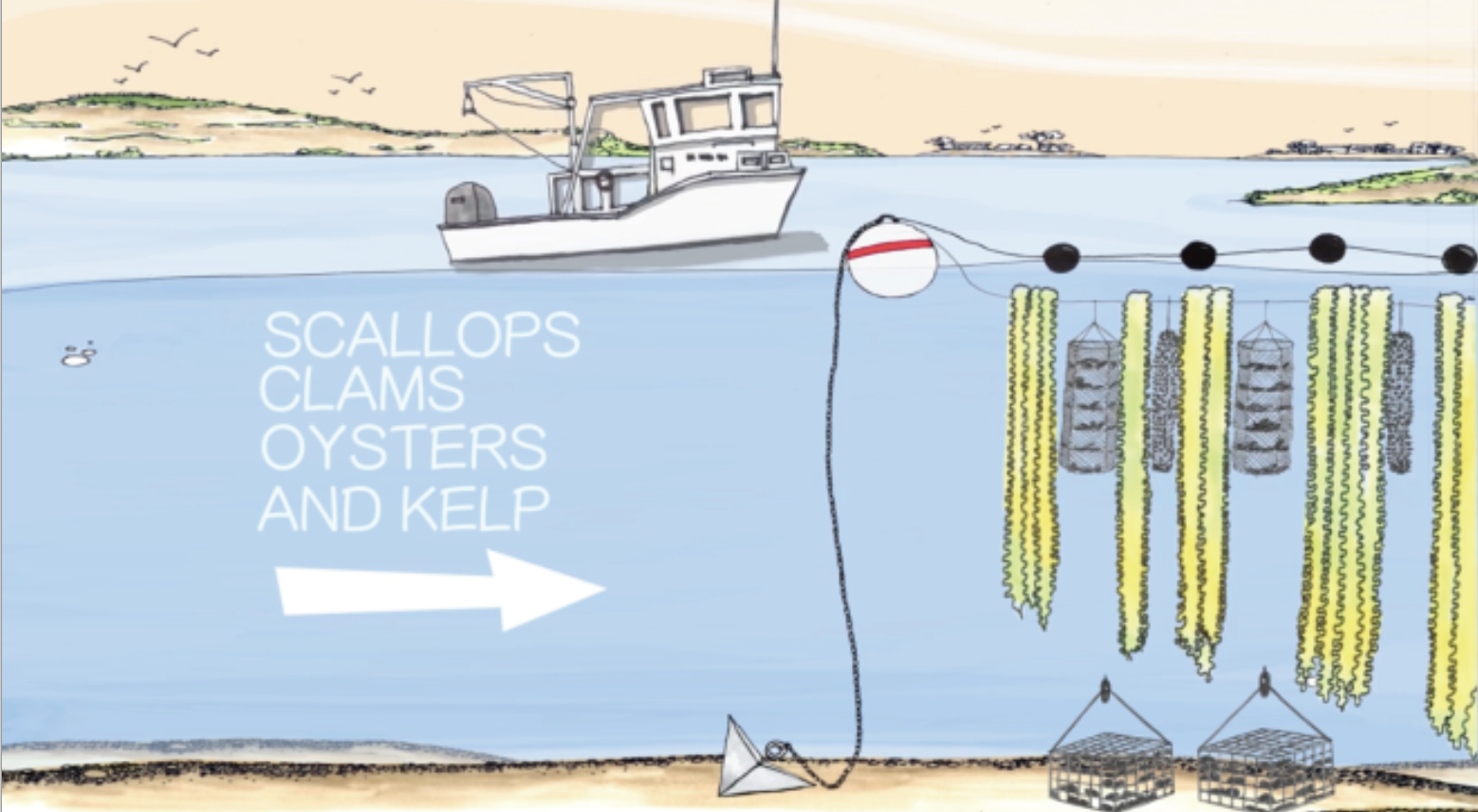Q&A with Ocean Farmer and Author Bren Smith
Published by Ocean Conservancy
Bren Smith is an ocean farmer and founder of GreenWave, an organization that supports the development of sustainable ocean farming. His upcoming book, Eat Like a Fish, dives into the world of restorative ocean farming. Ocean Conservancy’s Ryan Ono, manager of our Ocean Acidification Program, sat down with Bren to learn more about his story, his upcoming book and how Bren sees the future of sustainable ocean farming. Bren will be speaking at a book launch in Washington, D.C. on June 24th.
Ryan Ono: Before we dive in and talk about your book, can you tell us a bit about your story and what led up to your decision to write this book?
Bren Smith: I was born in a small fishing village in Newfoundland, Canada. At age 14 I dropped out of high school and headed out to sea. You name it, I fished it: lobster, tuna, crab, cod, herring. This was the 80’s, the height of industrial fishing. We were tearing up ecosystems with our trawls, fishing illegally in foreign waters, and most of the fish I was catching was going to McDonald’s for their fish sandwiches. Then the cod stocks crashed back home in Newfoundland and I transitioned to the salmon aquaculture farms, hoping it would be the answer to overfishing. But it turned out to be just as destructive: polluting waters with pesticides, heavy use of antibiotics, fish escapes, the list goes on and on.
Disillusioned, I went on a search for sustainability and began listening to the ocean and asking the simplest of questions: What does the sea want me to grow? The answer was seaweeds and shellfish. These are species that require zero inputs—no fresh water, no feed, no fertilizer—making it the most sustainable form of food production on the planet. They also soak up carbon, and when we farm them, function as artificial reefs and storm surge protectors. I think the future of ocean farming is growing species that we don’t have to feed, won’t swim away and help mitigate climate change.
I decided to write this book because I believe that the seas are here to save us. If done right, ocean farming can soak up carbon, feed the planet and create good middle class jobs. More U.S. territory sits below water than above, but we rarely think of the ocean as a tool for climate mitigation and regenerative agriculture. The Green New Deal barely mentions the oceans. I hope this book will play a modest role in addressing this gap.


Ono: It sounds like you’ve done a lot before this book. You’ve done TV, TED talks, been featured on multiple youtube videos, spoken at conferences, created a non-profit organization called GreenWave and visited DC to speak to legislators to spread the word about a more eco-friendly way to practice ocean farming by producing kelp and shellfish on the same farm. How does your book build on those previous ventures to make kelp and shellfish farming more widespread?
Smith: The last third of the book is about building a new economy out to sea—one that restores, rather than depletes ecosystems, while creating jobs and good local food. I included a section on the principles of regenerative ocean agriculture to begin scoping out a vision for our industry, in hopes of jumpstarting a discussion about how we can build a food system that is circular, equitable and restorative.
Ono: Combining kelp and shellfish farming makes sense to me, but I haven’t seen it really take off. Can you talk about why you think now is the right moment for it, and why it hasn’t caught on earlier?
Smith: From my vantage point, we’re seeing a huge growth curve. My farm remained in the incubation stage for over a decade, but now, in just the last two years, GreenWave has trained and supported over 50 farmers in seven states. One farm in Alaska just harvested 200,000 pounds of kelp this year, which was all sold to corporate cafeterias. Just this winter, new polyculture farms were installed in New York, California and Massachusetts. Each farm looks different—some start as seaweed farms and evolve into polyculture. Others are long-standing shellfish farms that are embedding seaweed into existing operations. And others function as seasonal farms that allow fishermen to diversify their income streams by growing seaweeds in the off-season.
I’m also seeing the industry growing in creative ways. GreenWave has partnered with a gaggle of organizations to embed sensors in four states. Each ocean farmer is paid to harvest data. At the same time, we’ve partnered with the group 2050 to develop a carbon credit regime for kelp. For me, the future of farming is about developing diverse income streams composed of food sales, data harvesting and ecosystem services credit systems.


Ono: A large part of GreenWave’s work is to replicate your farm model of producing shellfish and kelp. Who are you trying to reach through GreenWave and how do you make this type of farming an attractive career option for those people?
Smith: As a non-profit training the next generation of ocean farmers, we focus on three groups: women, indigenous communities and commercial fishermen. GreenWave has requests to start farms in every coastal state and twenty countries around the world, so the demand is there without any outreach. And we’re seeing women like Catherine Puckett, who farms oysters, clams and kelp while captaining her pink boat with an all male crew, take the helm.
Ono: Over the past 15 years, we’ve noticed a growing market for high-end oysters, shellfish and experimental food ingredients in large coastal cities. How do you see your farm model scaling to meet the needs of a growing market?
Smith: Our vision for scale is building GreenWave Reefs, composed of 25-50 small-scale farms in a region and a processing hub and hatchery on land, encircled by a rink of entrepreneurs developing value added products. These Reefs are then replicated up and down our coastlines. This allows for scaling through networks rather than massive, vertically integrated, industrial farms at sea. On the market side, one of the most interesting developments is the use of seaweeds as local fertilizer. Right now in New England, our kelp “waste”—the part of the plant that is too biofouled to be used as food—is sold as fertilizer for local parks and organic farms. I think there’s a real opportunity to build a bridge between land and sea agriculture, and in the process open up dynamic new circular markets and nutrient loops. The key for us is to grow the “right” way and not repeat the missteps of industrial aquaculture.
Ono: What can Ocean Conservancy members do to learn more and take part in your efforts?
Smith: The end of the book lists a host of ways people can get involved, including working locally to develop sea trusts—piggybacking on the land trust models—and hosting house parties to support GreenWave’s educational programming. A fun way to engage is to get cooking with sea greens. I included a host of recipes in the book, developed by famous chefs, so that readers can being experimenting at home. Every meal creates more demand for local farmers’ crops, while helping save the planet!
Sign up for our emails!
The post Q&A with Ocean Farmer and Author Bren Smith appeared first on Ocean Conservancy.
Read the full article at: https://oceanconservancy.org/blog/2019/06/13/qa-ocean-farmer-author-bren-smith/



